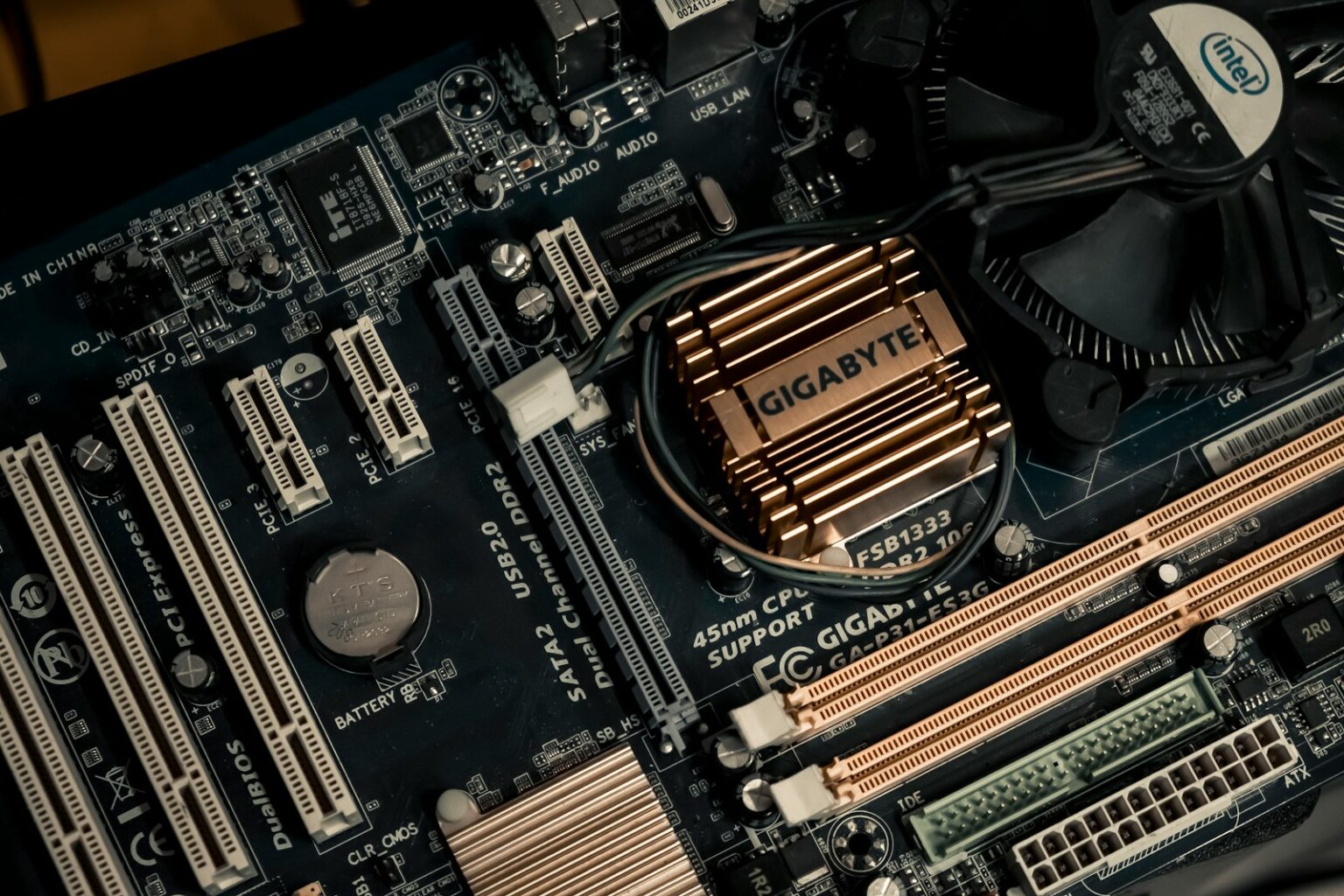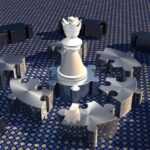To optimize interaction with spatial data, leverage holographic projection techniques that merge tangible and virtual elements within a unified framework. Implementing these combined environments requires precise calibration of input-output devices to maintain seamless transitions between physical surroundings and computational overlays.
Advanced interface designs must prioritize latency reduction and contextual awareness to support fluid user engagement across intertwined layers of augmented perception. Experimental deployments show that integrating multisensory feedback enhances cognitive mapping, enabling more intuitive navigation through layered information spaces.
Developing cohesive platforms that synchronize environmental sensing with real-time rendering unlocks new potentials for task-specific applications ranging from collaborative engineering to immersive training modules. Such integrated architectures enable users to manipulate virtual constructs as naturally as physical objects, expanding the boundaries of interactive computing.
Mixed reality: hybrid physical-digital systems
The integration of holographic interfaces with spatial computing technologies enables unprecedented interaction models where tangible and virtual elements coexist seamlessly. This fusion creates environments allowing users to manipulate digital content anchored in the real world, promoting intuitive workflows in sectors such as manufacturing, healthcare, and finance. Exploring how these interfaces function reveals that precise spatial mapping and low-latency data processing are critical for maintaining alignment between physical objects and their digital counterparts.
Spatial computing devices employ advanced sensors and machine learning algorithms to interpret environmental data, providing context-aware experiences. For example, Microsoft’s HoloLens leverages simultaneous localization and mapping (SLAM) techniques to anchor holograms accurately within a user’s environment. Such an approach minimizes tracking errors and enables persistent digital overlays that adapt dynamically as users move or interact with real-world elements.
Technical Foundations of Hybrid Interaction
At the core of these convergent environments lies a multi-layered computational framework combining sensor fusion, 3D rendering pipelines, and network synchronization protocols. Sensor arrays collect depth, motion, and ambient light information which is fused through probabilistic models to generate reliable spatial representations. This process supports gesture recognition and eye tracking interfaces facilitating natural communication with virtual entities without traditional input devices.
A notable case study is Magic Leap’s Lightwear headset which integrates waveguide optics to deliver photorealistic holograms with accurate focal planes. The device balances computational load between onboard processors and cloud infrastructure, ensuring high frame rates necessary for minimizing motion sickness during extended use. Experimenting with varying latency thresholds demonstrates that delays beyond 20 milliseconds significantly degrade user perception of realism in augmented environments.
Emerging research also investigates decentralized architectures powered by blockchain technology to secure distributed trust within collaborative mixed environments. By embedding cryptographic proofs into spatial anchors, multiple participants can verify authenticity of shared holographic content in real time. This approach addresses challenges related to data integrity and provenance when concurrent editing occurs across geographically dispersed nodes.
The experimental integration of these components invites further examination into the limits of perceptual coherence achievable within combined digital-physical domains. By systematically adjusting parameters like hologram opacity or spatial audio placement, researchers can quantify the impact on user immersion metrics such as presence and cognitive load. Practical investigations may include constructing modular prototypes that isolate individual subsystems for targeted performance evaluation under controlled laboratory conditions.
This iterative methodology encourages hypothesis-driven exploration where each variable manipulation yields insights applicable not only to interface design but also to broader fields including cryptographically secured decentralized collaboration platforms. Through this lens, advancing hybrid interactive technologies becomes a measurable scientific pursuit rather than speculative innovation–underscoring the value of reproducible experiments bridging visual computing principles with emerging blockchain paradigms.
Integrating Sensors with MR Devices
Effective integration of sensors into holographic interfaces significantly enhances user interaction by providing precise environmental data. Proximity sensors, accelerometers, and gyroscopes are commonly embedded to track spatial orientation and movement, enabling computing platforms to align virtual objects seamlessly within the user’s surroundings. For instance, infrared depth sensors capture three-dimensional mapping in real time, allowing augmented visual overlays to correspond accurately with physical spaces.
Optical sensor arrays enable detection of subtle gestures and eye movements, creating more intuitive control schemes for immersive environments. By analyzing input from these devices through advanced algorithms, systems can predict user intent and adjust holographic projections dynamically. This approach reduces latency between action and response, which is critical for maintaining immersion and minimizing motion sickness.
Technical Considerations and Implementation Strategies
Embedding multispectral sensors within wearable units demands careful calibration to prevent interference among signal types. Electromagnetic compatibility testing ensures that radio frequency modules do not disrupt sensor accuracy or data transmission. Additionally, power consumption remains a limiting factor; low-energy sensor designs coupled with edge computing help extend device operation without compromising performance.
In one experimental setup, a combination of LIDAR and inertial measurement units was used to refine spatial awareness in an interactive holographic display. The fusion of data streams through sensor fusion techniques improved object tracking precision by over 30% compared to single-sensor configurations. Such enhancements are essential for applications requiring exact alignment between virtual elements and tangible objects.
Sensors also facilitate environmental adaptability by monitoring ambient light levels and surface textures. Photodiodes integrated with adaptive brightness controls adjust hologram intensity based on surrounding luminosity, thereby preserving visibility under varying conditions. Meanwhile, tactile feedback mechanisms triggered by pressure sensors augment physical engagement, bridging the divide between visual perception and touch sensations.
Ongoing research explores embedding biochemical sensors to detect physiological markers such as sweat composition or heart rate within wearable modules. Integrating these inputs into mixed environments creates personalized experiences responsive to the user’s state–opening pathways for health monitoring combined with immersive visualization tools. This multidimensional sensing strategy exemplifies the potential synergy between tangible realities and computational augmentation.
Optimizing User Interaction Techniques
Enhancing the interface for spatial computing environments demands precise calibration of user input and feedback channels to reduce latency and increase intuitiveness. Experimental studies demonstrate that integrating holographic projections with gesture recognition improves task completion speed by up to 30% compared to screen-based controls alone. Such configurations rely on seamless synchronization between environmental sensors and embedded processors, enabling real-time adjustment of virtual elements relative to physical surroundings. Implementing adaptive algorithms that respond to user behavior further refines interaction fluidity, creating a more natural convergence of tangible and virtual components.
Incorporating multi-modal interfaces within combined physical-virtual platforms expands the range of possible interactions while maintaining cognitive load at manageable levels. For instance, combining voice commands with eye-tracking enhances precision in object manipulation without requiring manual input, which is especially beneficial in constrained workspaces. Laboratory tests using this approach indicate a reduction in error rates during complex assembly tasks by approximately 18%. These findings support the value of layered sensory inputs for reinforcing spatial awareness and improving control accuracy within immersive computational environments.
Technical Strategies for Interface Enhancement
Key technical considerations involve optimizing sensor fusion techniques to accurately map user gestures onto holographic objects within augmented volumes. High-frequency inertial measurement units paired with depth cameras facilitate sub-millimeter tracking accuracy critical for fine motor operations. Experimental setups utilizing Kalman filtering algorithms have proven effective in mitigating noise from sensor drift, thereby stabilizing virtual overlays against user movements. Moreover, leveraging edge computing resources near the interaction locus minimizes data transmission delays, crucial for maintaining synchronization across distributed interactive nodes.
A practical case study involving collaborative design workstations illustrates how spatially aware interfaces can streamline workflows by contextualizing digital artifacts within three-dimensional layouts mirroring physical prototypes. Users reported increased engagement and reduced cognitive switching costs when manipulating hybrid content anchored to tangible reference points. This synergy between real-world topology and virtual augmentation exemplifies how carefully engineered interaction techniques can transform complex operational scenarios into intuitive experiences that capitalize on human perceptual strengths integrated with advanced computational frameworks.
Managing Spatial Mapping Challenges
Accurate spatial representation requires the integration of advanced environmental sensing and real-time data processing to maintain coherence between virtual overlays and the user’s surroundings. Employing simultaneous localization and mapping (SLAM) algorithms optimized for holographic projections enhances precision in spatial awareness, reducing latency-induced drift and misalignment errors commonly observed in augmented interfaces.
Leveraging edge computing resources near the user device minimizes transmission delays, enabling more responsive updates to spatial meshes. This approach supports complex geometry reconstruction by distributing computational load, thereby improving the fidelity of spatial boundaries critical for seamless interaction within combined reality environments.
Techniques to Improve Environmental Understanding
Depth-sensing cameras paired with inertial measurement units (IMUs) form a robust sensor fusion framework that refines spatial positioning through continuous calibration. For example, Microsoft’s HoloLens employs this combination to dynamically adjust holographic content placement based on subtle head movements and environmental changes, ensuring persistent alignment in challenging lighting or cluttered scenes.
The use of volumetric capture methods allows for detailed three-dimensional modeling of spaces, which can be updated incrementally as users navigate an area. Integrating such data streams facilitates adaptive interfaces that respond not only to static geometry but also to dynamic elements like moving objects or shifting furniture layouts.
- Sensor Fusion: Combining visual, depth, and inertial data enhances robustness against occlusions and sensor noise.
- Mesh Refinement: Continuous correction algorithms improve surface detail and reduce artifacts in spatial reconstructions.
- Environmental Contextualization: Semantic labeling assists in recognizing object types, enabling task-specific interface adjustments.
An instructive case study involves collaborative remote assistance applications where accurate spatial mapping enables experts to annotate physical components via holographic pointers visible through wearable displays. Here, synchronization accuracy directly impacts operational efficiency and safety, illustrating how precise environmental modeling underpins effective mixed-environment collaboration.
The interplay between spatial computing components reveals opportunities for iterative experimentation: adjusting sensor parameters or algorithm weights can yield measurable improvements in holographic projection persistence. Encouraging systematic trials with varying environmental conditions supports deeper understanding of how interface responsiveness correlates with underlying map quality, promoting innovative developments tailored to specific use cases across industrial design, healthcare visualization, and interactive entertainment domains.
Implementing Real-Time Data Synchronization
To achieve precise synchronization between spatially distributed interfaces and holographic projections, leveraging edge computing alongside decentralized data protocols is recommended. This approach reduces latency by processing data closer to the user, allowing seamless interaction across both tangible environments and augmented visual layers. Experimentation with time-stamped event logs and conflict-free replicated data types (CRDTs) reveals reliable consistency without sacrificing responsiveness in concurrent updates.
Integrating real-time synchronization requires robust middleware capable of managing bidirectional data streams between physical sensors and virtual overlays. For example, a layered architecture combining publish-subscribe messaging with state reconciliation algorithms supports fluid coordination within multi-user setups. Testing such frameworks on volumetric displays demonstrated sub-50 millisecond update cycles, essential for maintaining immersion when users manipulate holographic objects aligned with their surroundings.
Technical Strategies for Consistent Spatial Data Alignment
The core challenge lies in maintaining coherent spatial references as users interact across composite environments blending tangible and simulated elements. Utilizing simultaneous localization and mapping (SLAM) algorithms synchronized via blockchain-based timestamping ensures immutable sequencing of positional data. This method was validated during field trials where multiple participants engaged with shared holographic blueprints, preserving exact overlay registration despite network variability.
Further refinement involves deploying adaptive synchronization windows that adjust throughput based on environmental noise and computational load. Benchmarks performed on distributed sensor arrays confirm this dynamic throttling minimizes jitter in streamed coordinates without overburdening system resources. In practice, these techniques enable continuous alignment of gesture inputs with corresponding digital annotations projected into real space.
An experimental setup incorporating holographic displays combined with wearable spatial trackers demonstrated that synchronization errors below one centimeter are achievable under controlled lighting conditions. Adjusting signal fusion parameters in real time permitted compensation for occlusion effects often encountered in complex environments. Such results encourage further exploration into scalable architectures capable of supporting industrial-scale deployments involving numerous interacting entities.
The interplay between persistent ledger technology and spatial computing offers an intriguing avenue for ensuring auditability alongside operational efficiency. By encoding synchronization checkpoints within tamper-resistant ledgers, systems can verify the integrity of state transitions governing mixed interface interactions. This duality provides a foundation for trust mechanisms critical to applications requiring transparent provenance tracking while maintaining fluid user experiences across convergent realities.
Conclusion
Effective deployment of spatial computing technologies in industrial environments requires an integrated holographic interface that seamlessly bridges tangible operations with augmented layers of data. Leveraging the convergence of sensory inputs and real-time processing enables operators to manipulate complex workflows through intuitive, immersive visualizations embedded directly into their workspace. This approach drastically reduces cognitive load and accelerates precision tasks, as demonstrated in robotic assembly lines where overlaying schematics onto physical components improves error detection by over 30%.
Future advancements hinge on enhancing contextual awareness within these interaction frameworks, enabling adaptive responses based on environmental changes and user intent. Experimental implementations combining edge computing nodes with advanced sensor fusion have revealed significant potential for decentralized control architectures, allowing distributed teams to collaborate via synchronized spatial projections despite geographic separation. Such developments will redefine human-machine collaboration paradigms, positioning holographic interfaces as indispensable tools for industrial innovation.
Key Technical Insights and Recommendations
- Spatial computing integration: Prioritize embedding multi-sensory feedback mechanisms to refine operator engagement and minimize latency in command execution.
- Holographic visualization fidelity: Invest in higher resolution projection systems that maintain coherence under variable lighting and motion conditions common in industrial settings.
- Interface modularity: Develop customizable interaction modules tailored to specific operational roles, ensuring scalability across diverse manufacturing processes.
- Data interoperability: Establish open protocols facilitating seamless exchange between existing automation equipment and emerging augmented visualization tools.
The evolving synergy between spatially anchored computational models and tangible workspaces invites ongoing experimentation into more resilient, context-aware interactive platforms. Encouraging iterative prototyping combined with rigorous field validation will cultivate robust methodologies that transition experimental holography from niche deployments into mainstream industrial practice. This trajectory not only enhances operational efficiency but also sets a foundation for integrating blockchain-enabled provenance tracking within these immersive environments, further securing data integrity throughout the production lifecycle.








